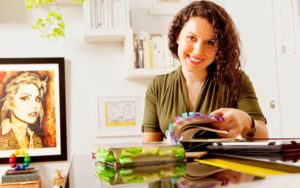May Sarton on the Art of Living Alone
INSPIRATIONAL, 11 Mar 2024
Maria Popova | The Marginalian – TRANSCEND Media Service
 “There is no place more intimate than the spirit alone,” the young May Sarton (May 3, 1912–July 16, 1995) wrote in her stunning ode to solitude — the solitude she came to know, over the course of her long and prolific life, as the seedbed of creativity.
“There is no place more intimate than the spirit alone,” the young May Sarton (May 3, 1912–July 16, 1995) wrote in her stunning ode to solitude — the solitude she came to know, over the course of her long and prolific life, as the seedbed of creativity.
Living alone can be deeply rewarding and deeply challenging. It is not for everyone. It is not for those who romanticize its offerings of freedom and focus, but excise its menacing visitations of loneliness and alienation. It is not for those who find silence shattering. It is especially not for those who hunger for another consciousness to validate their experience and redeem their reality. It is only for the whole.
In her elder years, living alone on the coast of Maine and savoring a renaissance of creative energy after a long depression, Sarton returns to the subject of what solitude is and is not on the pages of her boundlessly rewarding journal The House by the Sea (public library).
Looking back on her life, she writes:
Solitude, like a long love, deepens with time.
But what solitude brings to a person is shaped by what the person brings to solitude. One August day, life brings Sarton a prompt to consider the art of living alone and the necessary preconditions for making of solitude not a resignation but a rapture:
Yesterday I had a letter from a young woman who is living alone, a film maker of some reputation. She wants to do a film on people who live alone, and will come next week to talk about her plans. I gather she has some doubts about the solitary life. I told her that I feel it is not for the young (she is only thirty-three). I did not begin to live alone till I was forty-five, and had “lived” in the sense of passionate friendships and love affairs very richly for twenty-five years. I had a huge amount of life to think about and to digest, and, above all, I was a person by then and knew what I wanted of my life. The people we love are built into us. Every day I am suddenly aware of something someone taught me long ago — or just yesterday — of some certainty and self-awareness that grew out of conflict with someone I loved enough to try to encompass, however painful that effort may have been.
Complement with the Buddhist scholar and teacher Stephen Batchelor on the art of solitude, Emerson on what solitude really means, and a contemporary field guide to how to be alone, then revisit Sarton on gardening and creativity, how to cultivate your talent, how to live openheartedly in a harsh world, and her stunning poem about the relationship between presence, solitude, and love.
_______________________________________
 My name is Maria Popova — a reader, a wonderer, and a lover of reality who makes sense of the world and herself through the essential inner dialogue that is the act of writing. The Marginalian (which bore the unbearable name Brain Pickings for its first 15 years) is my one-woman labor of love, exploring what it means to live a decent, inspired, substantive life of purpose and gladness. Founded in 2006 as a weekly email to seven friends, eventually brought online and now included in the Library of Congress permanent web archive, it is a record of my own becoming as a person — intellectually, creatively, spiritually, poetically — drawn from my extended marginalia on the search for meaning across literature, science, art, philosophy, and the various other tendrils of human thought and feeling. A private inquiry irradiated by the ultimate question, the great quickening of wonderment that binds us all: What is all this? (More…)
My name is Maria Popova — a reader, a wonderer, and a lover of reality who makes sense of the world and herself through the essential inner dialogue that is the act of writing. The Marginalian (which bore the unbearable name Brain Pickings for its first 15 years) is my one-woman labor of love, exploring what it means to live a decent, inspired, substantive life of purpose and gladness. Founded in 2006 as a weekly email to seven friends, eventually brought online and now included in the Library of Congress permanent web archive, it is a record of my own becoming as a person — intellectually, creatively, spiritually, poetically — drawn from my extended marginalia on the search for meaning across literature, science, art, philosophy, and the various other tendrils of human thought and feeling. A private inquiry irradiated by the ultimate question, the great quickening of wonderment that binds us all: What is all this? (More…)
Go to Original – themarginalian.org
Tags: Creativity, Inspirational, Loneliness, Psychology, Solitude, Wisdom
DISCLAIMER: The statements, views and opinions expressed in pieces republished here are solely those of the authors and do not necessarily represent those of TMS. In accordance with title 17 U.S.C. section 107, this material is distributed without profit to those who have expressed a prior interest in receiving the included information for research and educational purposes. TMS has no affiliation whatsoever with the originator of this article nor is TMS endorsed or sponsored by the originator. “GO TO ORIGINAL” links are provided as a convenience to our readers and allow for verification of authenticity. However, as originating pages are often updated by their originating host sites, the versions posted may not match the versions our readers view when clicking the “GO TO ORIGINAL” links. This site contains copyrighted material the use of which has not always been specifically authorized by the copyright owner. We are making such material available in our efforts to advance understanding of environmental, political, human rights, economic, democracy, scientific, and social justice issues, etc. We believe this constitutes a ‘fair use’ of any such copyrighted material as provided for in section 107 of the US Copyright Law. In accordance with Title 17 U.S.C. Section 107, the material on this site is distributed without profit to those who have expressed a prior interest in receiving the included information for research and educational purposes. For more information go to: http://www.law.cornell.edu/uscode/17/107.shtml. If you wish to use copyrighted material from this site for purposes of your own that go beyond ‘fair use’, you must obtain permission from the copyright owner.
